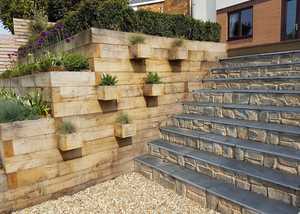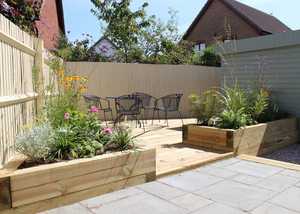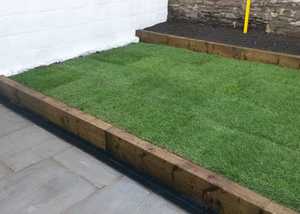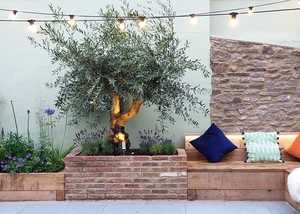Oak versus Softwood Sleepers
The addition of timber sleepers can offer a wonderful rustic aesthetic to your garden—and are well-suited for a range of practical uses. From creating sturdy, natural-looking edging for your vegetable patches and beds, to beautiful planters, pathways and steps. They are a hugely versatile, eco-friendly feature in the world of garden design.
With a choice to be made in the Fountain Timber range, however, between oak and softwood, it can be difficult to know exactly which type of sleeper you should be using for each particular job.
So, with that in mind, and to help with all your sleeper-based queries, let us explore the differences between each product, their individual benefits, and find out which is a suitable fit for your project.
Softwood Sleepers
The first notable benefit of choosing treated softwood sleepers is the favourable price point, which makes them a popular choice when undertaking larger edging and retaining jobs in your garden. As well as the economic advantages of softwood, it’s also a much lighter raw material than its hardwood counterpart—and, consequently, easier to manoeuvre, cut, and position.
Because of these functional qualities, softwood sleepers offer users a huge amount of versatility when it comes to their garden projects—pathways, steps and raised flower beds can be constructed without too much labour intensity and skill required. While not quite as durable or robust as oak, softwood sleepers remain a highly-desirable, versatile, and eco-friendly product in the Fountain Timber range.


Oak Sleepers
Just like the softwood alternative, Fountain Timber’s green oak sleepers are a multipurpose garden feature—as well as having the additional properties of durability and strength to make it a hugely popular product.
When oak dries, it hardens and shrinks naturally, offering customers a uniquely robust material for any number of garden projects that rely on structural integrity. Green oak’s higher moisture content also leaves a smooth finish when cut or machined for that little extra aesthetic charm.
It’s worth noting that oak sleepers tend to be much heavier than softwood, and it’s possible you might need a helping hand while lifting and positioning them.
So, whether it’s garden paths, retaining walls or planters, and plenty of other uses in between—green oak sleepers are a hard-wearing, durable, and ecologically-sustainable design solution.


Which Should I Choose?
When choosing a raw material like timber for outdoor use, one that will be exposed to the elements all-year-round, one of the fundamental characteristics customers look out for is its resistance to rot. When treated, both softwood and oak sleepers are highly impervious to decay. While with softwood you can expect up to 20 years of use before the effects of age and the elements take their toll—with a green oak sleeper, you can anticipate up to 40 years. So, for that extra piece of mind for your garden sleeper project, for a basic structure that will stand the test of time, green oak might just be your answer.
How can we help?
So, there’s plenty to consider when it comes to making the right sleeper choice, and both products have their own distinct qualities that make them a wonderfully versatile, hard-wearing, and eco-friendly product. If you would like to find out more about our timber sleepers, either softwood or oak, or would like some advice about your latest project, please don’t hesitate to contact our friendly team.
Posted on February 26th 2022

